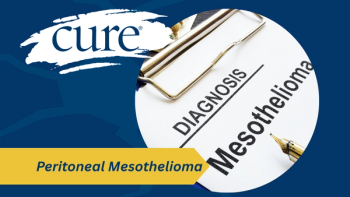
Trial Evaluates Reduced Chemo Post-Stem Cell Transplant in Blood Cancers
The first patient has been enrolled in a clinical trial evaluating a reduced dose of post-transplant immunosuppressive chemotherapy cyclophosphamide for patients with blood cancers.
The first patient has been enrolled in a clinical trial evaluating a reduced dose of post-transplant cyclophosphamide (PTCy, an immunosuppressive chemotherapy treatment administered after stem cell transplantation) for patients with blood cancers, according to an announcement from NMDP, the organization formerly known as the National Marrow Donor Program.
The phase 2 OPTIMIZE trial, sponsored by NMDP through the Center for International Blood and Marrow Transplant Research (CIBMTR), will enroll approximately 190 patients and is estimated to be completed in June of 2026, according to its listing on clinicaltrials.gov.
The trial will evaluate if a lower dose of PTCy will reduce the risk of infection during the first 100 days after a transplant of peripheral blood stem cell from partially matched unrelated donors and still prevent instances of graft-versus-host disease (a complication where donor tissue is attacked by the recipient’s body), according to a news release from NMDP.
“We are encouraged by the OPTIMIZE trial’s potential to transform patient care in blood cancer treatment,” said Dr. Jeffery J. Auletta, senior vice president, health equity at NMDP and chief scientific director, CIBMTR, in a statement included with the news release. "By exploring a reduced dosage of post-transplant cyclophosphamide, we aim to enhance patient survival and quality of life by minimizing the toxicity typically associated with standard dosing. This trial represents a pivotal step forward, laying the groundwork for future research using innovative strategies for preventing and treating not only graft versus host disease, but also malignant disease relapse as well as applying MMUD transplant to cure non-malignant diseases like sickle cell disease. Our commitment to improving outcomes for transplant patients drives our enthusiasm for the groundbreaking work in the OPTIMIZE trial.”
The trial is currently recruiting patients, with the intention of being opened at as many as 50 centers in the United States, starting at Oregon Health and Science University (OHSU).
"I am thrilled about the initiation of the OPTIMIZE clinical trial, which represents a significant advance in blood cancer treatment by exploring the potential of reduced dose PTCy to mitigate adverse effects and ensure broader treatment inclusivity,” said Dr. Rachel J. Cook, network chair and principal investigator at OHSU. “This trial is a step towards significantly improving patient outcomes by aiming for more personalized and less toxic treatment protocols.”
But the current standard dosage of PTCy has been linked to a significant risk of bacterial and viral infection as well as other severe side effects.
The OPTIMIZE trial, according to the news release, aims to “improve patient survival and quality of life by decreasing acute and long-term toxicities associated with standard dose PTCy[,] …decrease relapse by enabling increased use of myeloablative conditioning [MAC] in the MMUD setting [and]permit future clinical trials incorporating reduced dose PTCy in combination with other novel immune therapies to prevent GVHD and malignant disease relapse.”
For more news on cancer updates, research and education, don’t forget to





